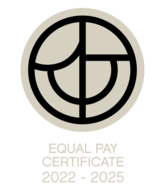Student Information
Here you will find information for students enrolled in the RU School of Computer Science
Rules for graduate studies programmes
- Rules for MSc in Computer Science and Software Engineering
- Rules for MSc in Artificial Intelligence and Language Technology
- Rules for PhD programme in Computer Science
Recognition of previous studies
- A student who has completed university-level courses at a recognized university can request to have the credits for those courses transferred to RU.
- Transfer of credits is only possible for courses that the applicant has passed satisfactorily.
- Decisions about credit transfers are made by the Credit Transfer Committee ("Námsmatsnefnd").
Credit transfer applications should be accompanied by the following material:
- Application form (printed from the web);
- Officially validated transcript from the other university;
- Course descriptions from the other university. (Descriptions must match the year that the course was taken.)
All the materials should be handed over to the Undergraduate Administrator. If you need to contact the Credit Transfer Committee you can write an email to: td@ru.is
Application for credit transfer
Uploading a thesis into Skemman
The library sets strict procedures to ensure the quality of publications and cataloging in Skemman. The library does not approve publication of a final project in Skemman unless a printed copy is available and thus clear, that the student has achieved the required grade. Should the library not receive a printed copy of a final project from a student within six months from uploading a project onto Skemman, the Library reserves the right to reject the publication of the electronic copy and will delete it. The student in question will receive an email with notification that the publication has been rejected and the reasons why. Furthermore, students are advised refer to their schools office for further clarification.
Further information is available at http://en.ru.is/skemman and on the website itself at https://skemman.is/
Available internships
Fraunhofer Center for Experimental Software Engineering, University of Maryland, USA
Fraunhofer USA Center for Experimental Software Engineering, affiliate of The University of Maryland
Students at all levels (undergraduate, graduate, and doctoral) in Computer Science and Software Engineering can apply for paid internships at the Fraunhofer USA Center for Experimental Software Engineering (Fraunhofer USA CESE) in the U.S.
BSc students should have finished four semesters before going to Fraunhofer USA CESE, but MSc and PhD students can go at any point. The internship includes a paid monthly stipend.
About Fraunhofer USA CESE
Fraunhofer USA CESE is located approximately 1.6 km from the campus of the University of Maryland (UMD), which is the flagship public university in Maryland, and is in close proximity to Washington, DC. UMD has more than 40,000 students and is well-known for Computer Science (16th in the U.S.), Mathematics, Engineering, Economics, and Business.
Fraunhofer USA CESE has approximately 20 staff members (professional staff, graduate research assistants, student interns, professors) and is located in the research corridor next to the UMD campus. Its mission is to “accelerate economic and industrial development for its customers by using innovative model‐based methods for developing and assuring complex software-intensive systems.”
Research activities at Fraunhofer USA CESE
Fraunhofer USA CESE conducts applied research to bridge the gap between academia and industry, applying foundational research principles to:
- Design tools and techniques
- Perform verification and validation
- Analyze, evaluate, and develop software
- Create modeling and simulation environments
- Provide software project management
Fraunhofer USA CESE applies the results of that research to fields such as:
- Aerospace
- Defense
- Automotive
- Medical
Its biggest customers are NASA, National Science Foundation, manufacturing companies, and defense.
Internships at CESE
Fraunhofer USA CESE has hosted more than 100 international interns since 2000. Interns work on research projects involving software development and tool application. Interns from RU get to participate in the ongoing research projects during their stay. Examples of projects in which interns have been involved are:
Data Architecture Platform for NIH BRAIN Initiative:
The National Institutes of Health is spearheading the BRAIN Initiative to revolutionize our understanding of the human brain through the development and application of innovative technologies. In this effort Fraunhofer USA CESE evaluates the existing brain imaging process and system created by project partners to design, prototype, and enhance the software architecture for the entire brain imaging pipeline. These enhancements will enable the research team to more easily improve the brain imaging process, swap image acquisition and processing algorithms, collect and process data, and adapt to future research needs in a scalable and repeatable manner. The architecture will provide a framework to test these workflows and algorithms, making it easy for researchers to experiment with new algorithms and optimize workflows.
Software Quality Metrics for large machinery manufacturer:
The Electronics group of a large manufacturer engaged Fraunhofer USA CESE to explore software release readiness metrics for their software programs. The goal is to identify the number of defects in the software and define indicators of its functional correctness to help gauge when the software is ready for validation and verification. This effort began with Fraunhofer USA CESE conducting a workshop to identify the factors that drive software release readiness. Fraunhofer USA CESE then analyzed existing software metrics gathered through automated build tools and created a set of defect prediction models to identify factors that enable prioritization of the development effort. The resulting recommendations included improvements to enhance process and software quality and better data collection and defect prediction methods. The next phase aims to train personnel to implement the recommendations during production cycles.
Practical information
A typical internship lasts for 6 months. Interns work under the supervision of a staff scientist at Fraunhofer USA CESE, and the typical schedule is:
- First two weeks/beginning: orientation, learning
- Five months: on-the-job training/project work
- Last two weeks: knowledge transfer
- Last week/end: writing (report, papers) and final presentation
Interns are assigned to staff upon arrival. Intern and staff members meet early and often. Research leads to undergraduate research reports or final projects, MSc theses, PhD theses, research papers, etc. The research can be used for these reports at RU.
Students are expected to arrange and pay their own transportation to the U.S. Also students are expected to find their own accommodations but Fraunhofer USA CESE can help students along.
H-O-T
Students can apply for an intership at Härte- und Oberflächtechnik GmbH & Co (H-O-T) in Germany. The internshop is six months and students are provided with an apartment and the internship is paid.
CCP Games
Students can apply for an internship at CCP Games in Reykjavik.
Rules regarding electives
Students seeking electives outside of the School of Computer Science must:
- Fulfil all course prerequisites as stated in the course catalogue
- Make sure that the course curriculum does not overlap with the course curriculum of previously taken courses
- Obtain the permission of the Curriculum Council (Námsmatsnefnd) to elect courses outside The School of Computer Science related to computer science, information technology or mathematics.

